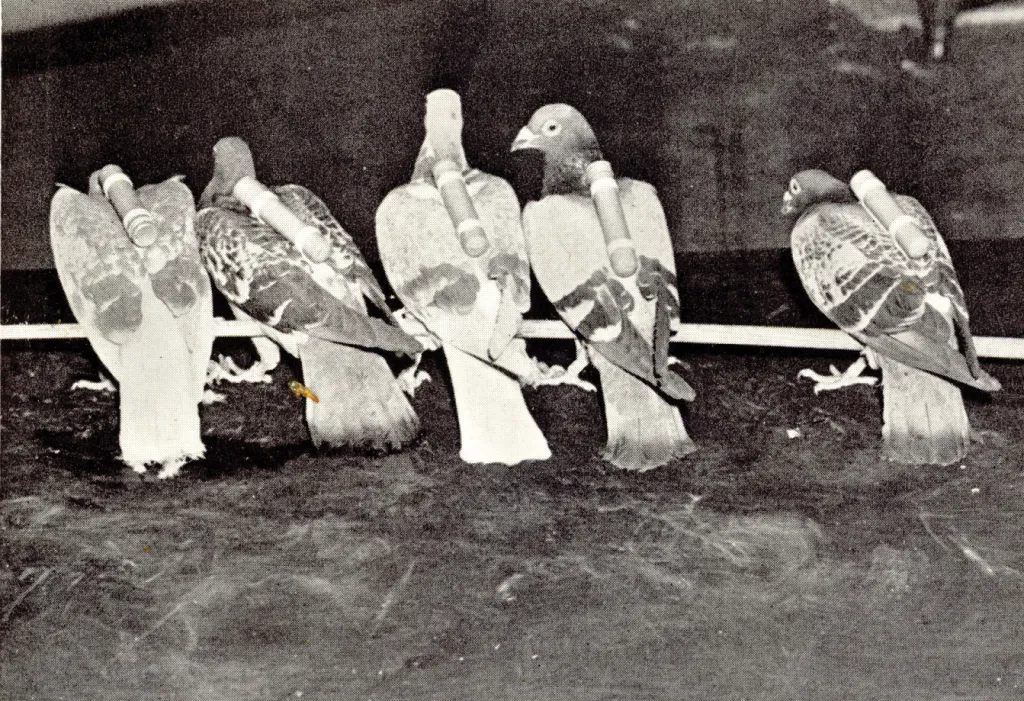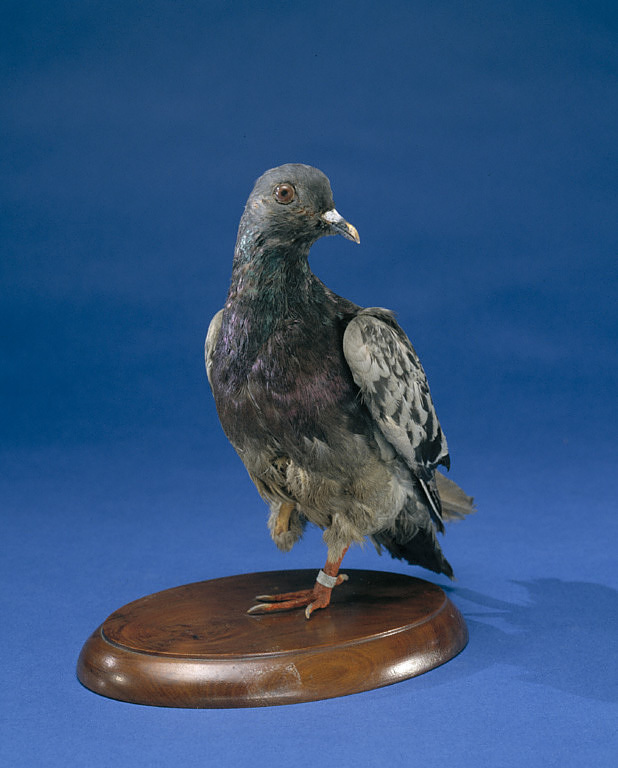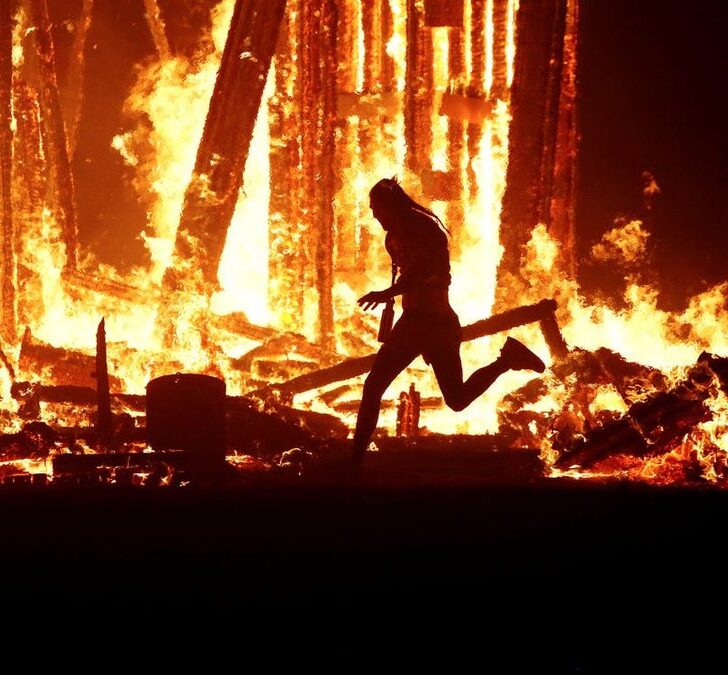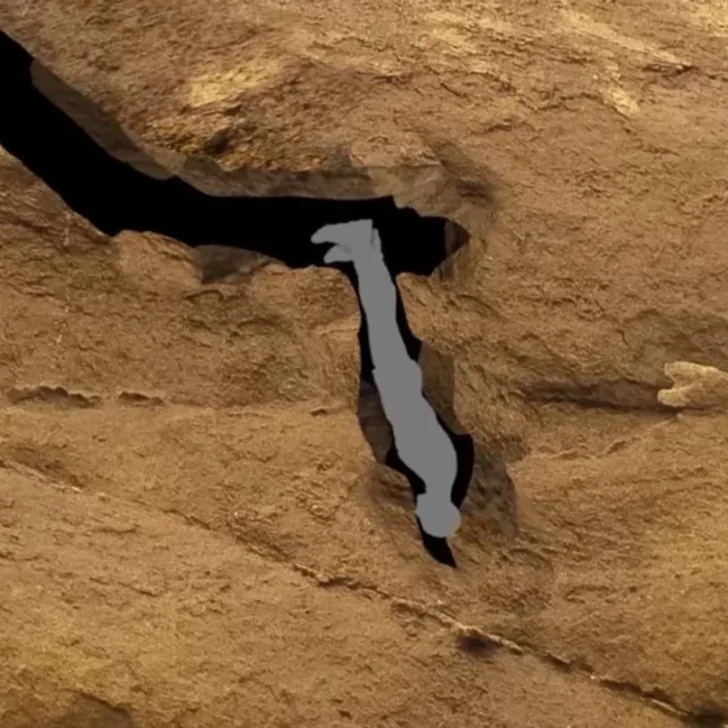World War I was the first major conflict of the 20th century. The war saw the introduction of new heavy weapons like tanks, machine guns, and chemical weapons, which changed the way wars had been fought for thousands of years.
However, amidst the modern technology, soldiers also relied on older, more reliable tools of war such as swords, horses, and even homing pigeons.


During World War I, there were a variety of communication methods that were available at the time.
These included telegraph lines, signal flares, message runners, and even early forms of radio. However, each method had its limitations, especially in the fog of war.
It seems strange that in the early 20th century, amidst a flurry of new electronic gadgets, homing pigeons were still an essential part of military communication strategies.
In fact, the U.S. Army Signal Corps relied heavily on these birds to carry messages when other methods failed, and they often did.
One of these birds, Cher Ami, whose name means “Dear Friend” in French, became one of the most famous of these war pigeons due to his heroic feat of sending a message over an open battlefield and saving over 100 soldiers who were pinned down by enemy fire.
The Role Of Homing Pigeons In World War I
During World War I, communication was critical for coordinating military operations. The infrastructure for telegraphs was often not in place or easily damaged by the enemy, and sending runners was risky and often failed.
Homing pigeons have been used to send and receive messages for thousands of years. Their first use has been documented as far back as ancient Egypt and Rome. In WWI, this ancient technology became indispensable for the military.
War pigeons were trained meticulously to carry messages from the front lines to command centers, often covering long distances under hazardous conditions.
They often had to navigate through harsh terrains, dodge enemy fire, and evade natural predators. Some of their duties included:
Air Reconnaissance: Pigeons could be launched from planes as they flew above the enemy. The pilots could relay messages to the ground and update commanders on enemy troop movements.
Signal Troop Advancement: Pigeons were always carried in tanks on the front lines so they could relay their units’ positions.
Communication In Trenches: On the front lines, pigeons were used to send critical information back to headquarters, including updates on enemy positions, supply needs, and requests for reinforcements.
Coordinating Artillery Fire: Pigeons were crucial for adjusting artillery fire. Soldiers would send updated coordinates and adjustments to artillery units so they could hit their targets more accurately.
Emergency Communication: When other communication methods failed or were too dangerous to use, pigeons ensured that messages could still get through.
Cher Ami and other pigeons played a vital role in these operations. On many occasions, these birds were the only reliable means of communication, especially when radio signals were jammed or when it was too risky for human runners.
How The Enemy Tried To Stop Homing Pigeons
Both sides recognized the critical role homing pigeons played in wartime communication and took measures to intercept or stop them. The enemy employed various tactics to prevent these feathered messengers from completing their missions:
Trained Falcons and Hawks: As they trained homing pigeons, both sides also trained falcons and hawks to intercept and kill homing pigeons mid-flight. Falcons and hawks were trained to recognize and attack pigeons based on distinct characteristics, such as their flight patterns or the appearance of the harnesses they wore. This way, they could distinguish between friendly and enemy pigeons.
Snipers and Marksman: Sharpshooters were stationed along likely flight paths to shoot pigeons out of the sky. These snipers were specially trained to target the birds as they flew over enemy territory.
Anti-Pigeon Measures: Barbed wire and netting were used around key areas to create physical barriers that could trap or injure pigeons trying to fly through.
Cher Ami’s Early Life And Training
Cher Ami was one of many pigeons that were bred for the military during WWI. War pigeons first underwent rigorous training to prepare them for the challenges of sending messages across battlefields.

These pigeons were carefully selected based on their natural homing instincts and physical endurance. Only the strongest and most reliable pigeons were chosen for military service.
Homing pigeons possess a natural ability to find their way back home from long distances, using the Earth’s magnetic field, the position of the sun, and visual landmarks.
Pigeon trainers took advantage of these natural abilities and reinforced them through rigorous training. This included simulated battlefield environments to acclimate the pigeons to the sights and sounds of war.
Once on the front lines, Cher Ami and his fellow pigeons had to adapt quickly to the realities of war. This included flying through smoke, gunfire, and exploding bombs.
The Meuse-Argonne Offensive And The Lost Battalion
The Meuse-Argonne Offensive was one of the major World War 1 battles and part of the final Allied assault against Germany.
It took place from September 26 to November 11, 1918, in northeastern France and remains the largest campaign in United States military history, involving 1.2 million American soldiers.
It was near the end of this campaign, in October 1918, when a group of nearly 600 men from the 77th Division of the U.S. Army became surrounded by German forces in the Argonne Forest.
Cut off from all supply lines and pinned down under constant enemy fire, the situation looked bleak. They were completely cut off from Allied forces, and, what was worse, their supplies were running out fast.
The soldiers didn’t have many options; they had no radio, no telegraph, and the unfortunate runners sent to contact the outside world were either captured or killed. Thankfully, the unit had their homing pigeons with them, a standard issue in those days for situations just like this.
Major Charles Whittlesey began dispatching messages by pigeon with messages like, “Many wounded. We cannot evacuate,” and, “Men are suffering. Can support be sent?” But unfortunately, the pigeons were shot down.
The situation became even more chaotic and deadly when the artillery batteries that were supposed to be supporting Whittlesey’s men attempted to provide a barrage of protection for the battalion.
However, due to a miscommunication, they believed Whittlesey’s men were on the southern slope of the Charlevaux Ravine while they were actually on the northern slope. This resulted in the artillery targeting and killing their own men.
Cher Ami’s Crucial Mission
On October 4, 1918, Cher Ami was given the most important mission of his life: to carry a message for help and the unit’s location across enemy lines.
The message said, “We are along the road parallel to 276.4. Our own artillery is dropping a barrage directly on us. For heaven’s sake, stop it.”
As Cher Ami took off with the message, the Germans saw him and opened fire. He was shot through the breast, blinded in one eye, and had a leg hanging only by a tendon.
After some brief stops to rest, he managed to arrive back at division headquarters, 25 miles away, in just 25 minutes.
His message was received, allowing the Allied forces to stop attacking their own men and launch a coordinated attack, breaking through the German encirclement and providing the much-needed reinforcements and supplies.
Cher Ami’s mission saved the lives of 194 men and boosted the morale of Allied troops.
Aftermath And Recognition
Cher Ami’s extraordinary efforts did not go unnoticed. He was awarded the French Croix de Guerre for his heroic service, and after returning to the United States, he was celebrated as a national hero.
His story was in all the papers, and he was even honored with a gold medal from the American Pigeon Racing Union.
Army medics worked diligently to save Cher Ami’s life. They were able to remove the bullet and patch up his wounds. They even crafted a tiny wooden prosthetic that allowed him to stand and move more comfortably.
The medics also provided ongoing care to ensure his recovery, cleaning his wounds and monitoring his health.
Despite receiving medical care for his severe injuries, Cher Ami succumbed to complications from his wounds on June 13, 1919
After his death, Cher Ami’s body was stuffed and mounted by a taxidermist and placed on display at the Smithsonian’s National Museum of American History, where he can still be viewed today.

Cher Ami’s story has been featured in numerous books, articles, and documentaries, ensuring that future generations remember his contributions to the war effort and the bravery and sacrifices made by animals in military service.
The Legacy Of Cher Ami
The roles of animals on the battlefield are often overlooked and lost to history. But, the story of Cher Ami proves that animals have always played an important role alongside humans throughout history, especially during times of war.
Cher Ami’s remarkable story reminds us that not all heroes of World War I wore uniforms and, more importantly, that bravery and heroism can come from the most unexpected places.
Sources
https://en.wikipedia.org/wiki/Cher_Ami
https://www.si.edu/object/cher-ami%3Anmah_425415
https://prologue.blogs.archives.gov/2018/01/08/unsung-heroes-of-world-war-i-the-carrier-pigeons













Leave a comment